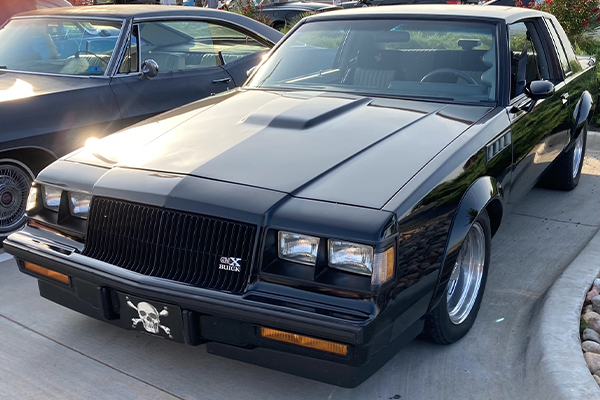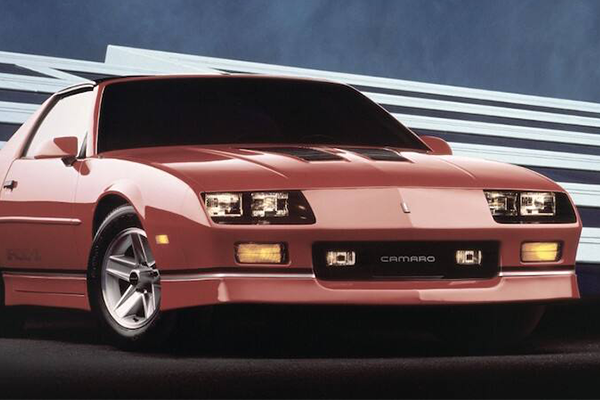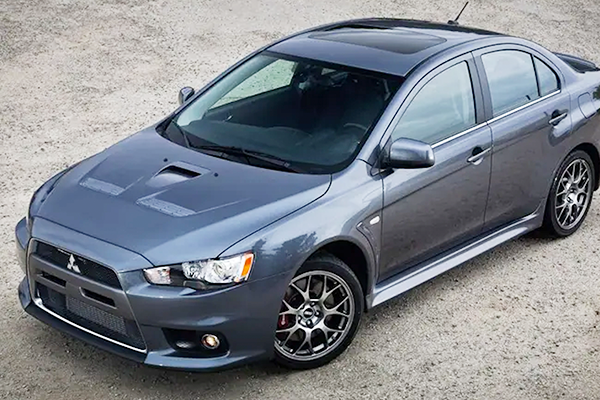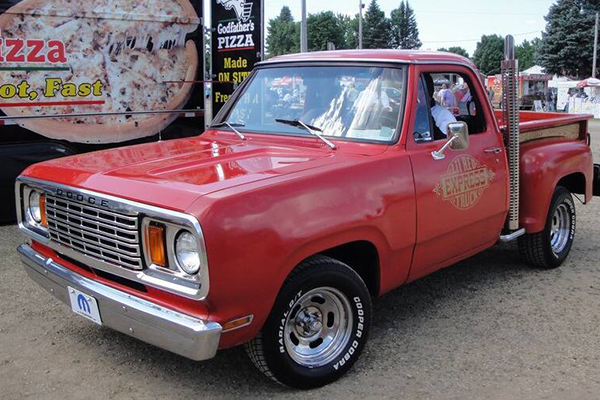
1902 GMC truck
Max and Morris Grabowsky may not be household names, but they cemented their place in automotive history nonetheless. In 1901, the Grabowsky duo built a truck prototype in Pontiac, Michigan, and went on to form their company – the Rapid Motor Vehicle Company – a year later. It didn't take long for the brothers' truck-building efforts and success to attract competitors' attention, with General Motors buying them in 1909. Just three years later at the New York Auto Show, the name GMC Trucks would make its debut.
And so begins the story of GMC's Sierra – a leader in the category of full-size pickups and a nearly identical twin to Chevy's Silverado truck lineup. It wasn't until the 1970s, however, that GMC would debut the name Sierra, using it to designate their trucks' trim level, until 1987 when Sierra began serving as the permanent name for GMC's full-size pickup.
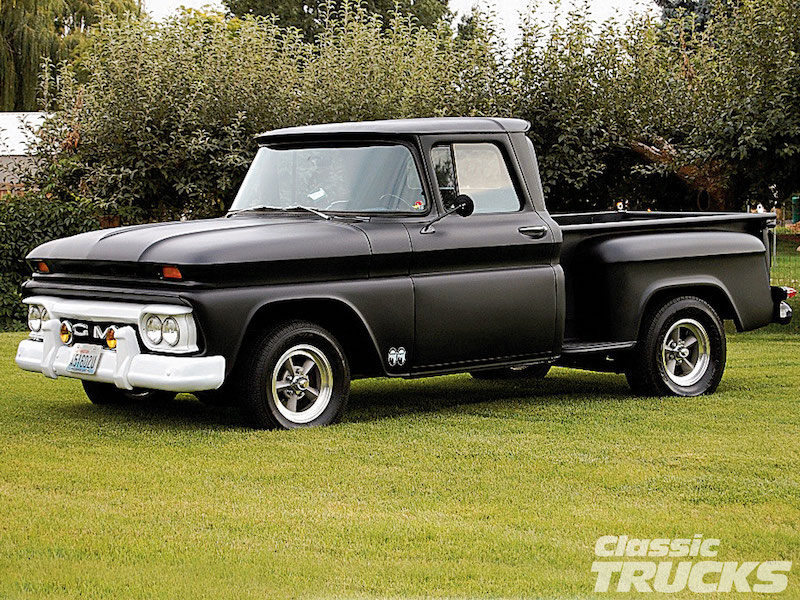
1960 GMC Pickup
The beginning
GMC's early, 1960's-era pickups – before the Sierra name change – were designated as either “wideside" or “fenderside" – the latter corresponding to what many drivers today refer to as “stepside" pickups with fenders that flare out over the rear wheels. GMC also was one of the first to use numbers to indicate its trucks' hauling capacities using the “1000," “1500," and “2000" designations that are common today in one form or another among all the major truck manufacturers. A “K" attached to those numbers indicated a GMC truck with four-wheel drive, and there were just two trim levels available – base or custom. The standard engine was a 236-cubic-inch inline-six delivering 135 horsepower.
Through the mid-1960's, GMC trucks underwent a suspension change, additional engine options, and cosmetic changes to freshen the truck's appearance. One of the most notable changes, and perhaps the start of pickups' migration to becoming more than just work vehicles, was the debut of air conditioning in 1965.
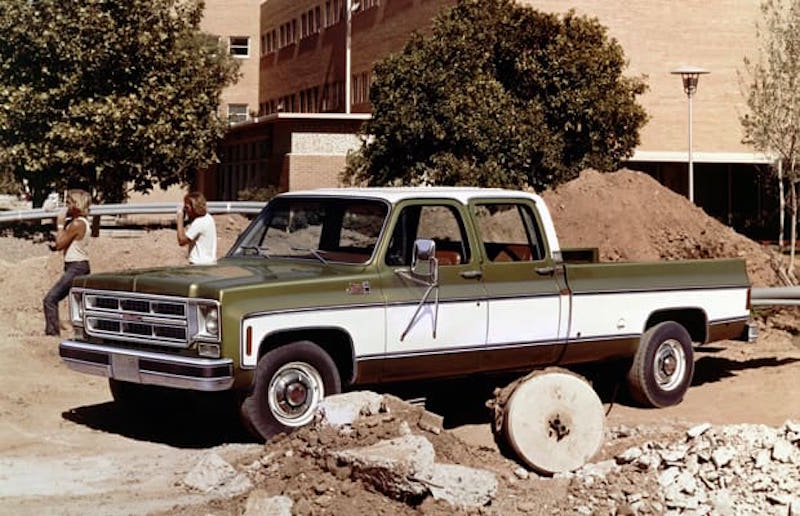
1976 GMC 2500 Sierra Wideside
The Sierra is born (officially)
1973 saw GM completely redesign its pickup truck line with longer wheelbases and the debut of a four-door crew cab, now officially named the Sierra. Engine choices ranged from a 100-horsepower, 250-cubic-inch inline-six on the low end, to a 240-horse 454 V8. The Sierra was built very similarly to its counterpart, the Silverado, except for the variations in the grilles and, of course, the nameplates.
In 1976, GMC introduced, for the first time, a crew cab truck as a solution to those who wanted to haul more than just equipment. In addition, they improved the truck interiors to be more people-friendly, replacing the metal fittings along surfaces with padded, softer materials.
Just one year later, in 1977, GMC would celebrate its 75th anniversary, but sadly, they didn't do much celebrating in the way of introducing new and improved models. Like they say, if it's not broke, don't fix it. And since GMC trucks were in third place for truck sales — despite the fuel crises just a couple years earlier — it definitely wasn't broke.
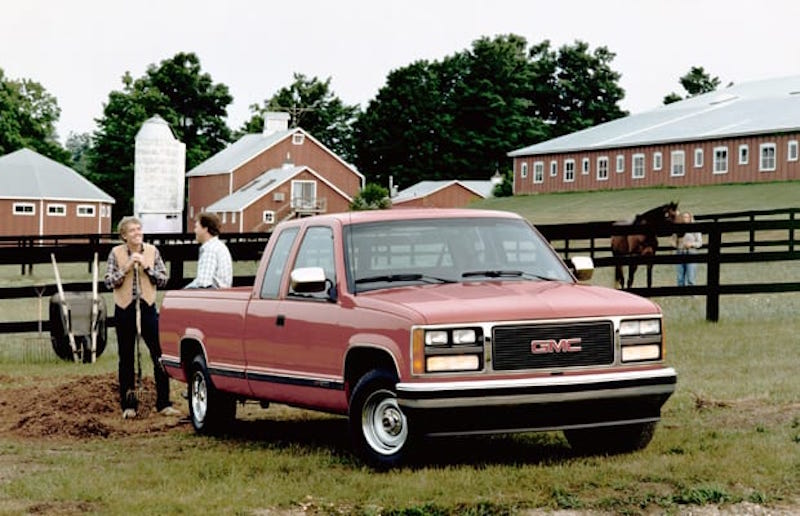
1988 GMC C1500 Sierra Wideside
Talk about a facelift
GM's next complete overhaul of its Sierra truck line wouldn't occur until the 1988 model year with trucks sporting a third more glass for improved visibility and a marked focus on more luxury items, such as upholstery and instrumentation. That 80's-era “luxury" pales in comparison to today's models, but was impressive for a truck in its time. The truck's exterior changed too with more of a rounded look, as opposed to the sharper edges found on previous models.
There were eight different versions of the C/K line for 1988: Fleetside Single Cab, Fleetside Extended Cab, Fleetside Crew Cab, and Stepside Single Cab, each in either 2WD (C) or 4WD (K) drivelines. Engines were a 4.3L V6, 5.0L V8, 5.7L V8 and a 6.2L V8 diesel. A 7.4L V8 was available in the three-quarter-ton and one-ton trucks.
1990 was a big year for GMC as they introduced a Work Truck (W/T), which featured a single cab long bed with Cheyenne trim and new grille with black bumpers. Then came, the GMC 3500 EFI with an amazingly powerful 454 engine. This engine produced 230 hp and 385 lb-ft of torque making it quite the "get up and go" truck.
In 1991, GM introduced a 15,000 pound GVWR truck – C3500HD – under the GMC nameplate that was later replaced by the 4500. It was marketed as a truck to bridge the gap between light-duty trucks and medium-duty trucks. In '94 and '95, the Sierra saw few changes other than grille updates, updated audio systems and interiors. Sierra was a standard chassis cab only until 1996 when a crew chassis cab was also offered. That same year, the 3500HD engine options were replaced by a 7.4L Vortec Big Block.
The truck remained basically the same until the end of the '90s.

1999 GMC Sierra 1500 SLT
A new generation: 1999-2007
For the 1999 model year, GM introduced the GMT800 Sierra 1500 SLT with a "classic" personality but also an upgrade. These trucks now featured a rear-hinged third door, solving the issue of passengers having to climb through the truck to the back seat. Big news arrived in 2001 with the new GMT800 Sierra HD.
The 6.0L Vortec 6000 V8 was added for the 2001 HD models, rated at 300 hp, with the GMC Sierra C3 getting an updated version of this engine. The C3 became the Denali for 2002 and Quadrasteer was added. GM made a reworked version of the Sierra in 2003, with a new front end and a slightly updated rear end.
In a first for GM, they introduced a hybrid version of Sierra in 2004. Calling it a "Parallel Hybrid" truck (PHT), the electric motor housed within the transmission flywheel housing served only to provide engine cranking/starting, battery charging, and accessory power. As the truck slowed to a stop, the engine automatically shut down, and then sent 42-volt electric power to the starter/generator unit to restart the engine when the brake pedal was released.
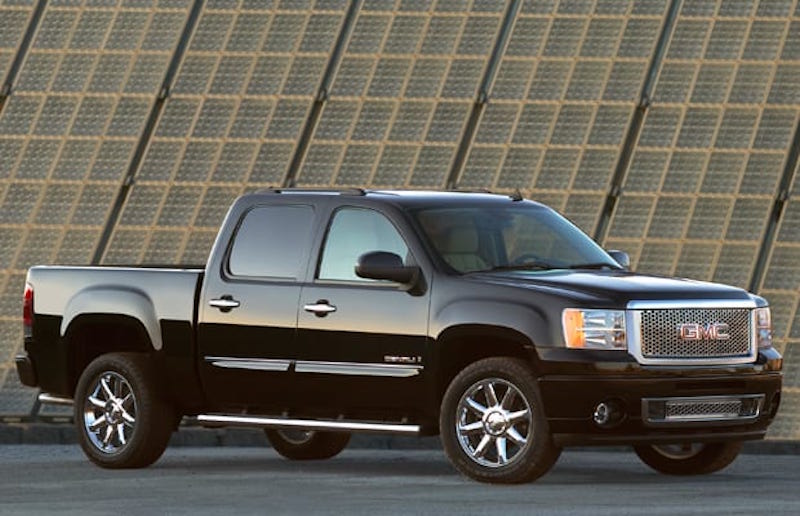
2007 GMC Sierra 1500 Denali
Modern truck for modern times
For 2007, the Sierra saw quite a few changes. This was the year that the redesigned GMT900 Sierra came on the scene with a completely updated interior, exterior, frame, and suspension, as well as power increases on select engines. This new Sierra offered improved aerodynamics, including a steep windshield and tighter panel gaps that helped improve fuel economy.
Available in two- or four-door regular, extended, and crew cabs, these Sierras were powered by the Generation-IV small-block V8 engine with upgrades that included increased power and Active Fuel Management on the 5.3L and 6.0L V8s. A new, high-performance 6.2L V8 was introduced later with the GMC Denali line, making the GMC Sierra the most powerful half-ton truck available at the time.
All Silverado and Sierra half-ton models received a revised bumper and shortened front fascia midway through the 2009 model year, and a full mid-cycle refresh followed with all 2010 models that included new interior door panels that moved the handle forward and added another cup holder, and a six-speed automatic transmission on regular and extended cab models with the 5.3L or larger V8. Two new exterior colors were also added – Taupe Gray Metallic and Sheer Silver Metallic.
During this generation, GMC maintained the ideal of a better-performing truck with improved fuel economy, upgraded features, and the return of sharper edges and deeper groves to give Sierra an upgraded, modern look.

2019 GMC Sierra | GMC
2014 TO TODAY
The third generation Sierra features numerous “firsts" and “bests" on the 2020 model, according to GMC, including:
- World's first six-function, multi-pro tailgate (featuring an exterior audio system integrated into the tailgate)
- Best-in-class V8 horsepower and torque
- Best-in-class light-duty diesel horsepower
- First-in-class heads up display and rear camera mirror
- Industry-first carbon-fiber bed
- Best-in-class crew cab head front head and leg room
- More cargo bed volume than any competitor
Available in SLE, Elevation, SLT, AT4, Denali, and 1500 trim levels, Sierra's list price starts at $29,600 and goes up from there, to about $67,000. City and highway mileage are rated at 23 and 30 mpg, respectively, and depending on the model, Sierra can tow just over 12,000 lbs. with max horsepower of 420 and max torque at 460 lb.-ft.
Technology abounds on today's Sierra, and nowhere is that more evident than with Sierra's safety features or its Prograde Trailering System. These intelligent technologies utilize an in-vehicle app paired with a high-resolution camera that make trailer hook up and towing a breeze. The app even provides a way to test the trailer's lights. Audio technology – in addition the tailgate audio – includes SiriusXM 360L and easy pairing with driver's smartphone.
Sierra's technology really comes' into focus, however, where it matters most – safety. The list of innovative safety features is long and impressive, particularly for any long-time Sierra owners comparing the 2020 model to earlier decades. Consider some of the following safety innovations:
- Adaptive cruise control that utilizes cameras and automatically adjusts the vehicle speed to maintain a desired distance from other vehicles
- IntelliBeam headlights that automatically switch between high and low beams, depending on what's detected ahead
- Lane change and side blind zone alerts that indicate another vehicle's presence
- Forward collision alert
- Lane departure warning
- Front pedestrian braking
- Rear cross traffic alert
- Front and rear park assist
For parents of teen drivers, there's even a “Teen Driver" technology option that automatically activates certain vehicle safety systems, and provides parents with a “report card" of their teen's driving habits.
With bold design, powerful engines, and innovative technology, it's hard to compare this newest Sierra with its 60-year-old ancestors as they are similar in name only. Still, after decades of popularity among truck buyers and features that give drivers what they want, Sierra's popularity doesn't show any signs of slowing down.
Are you a Sierra owner or a fan? Let us know in the comments.


